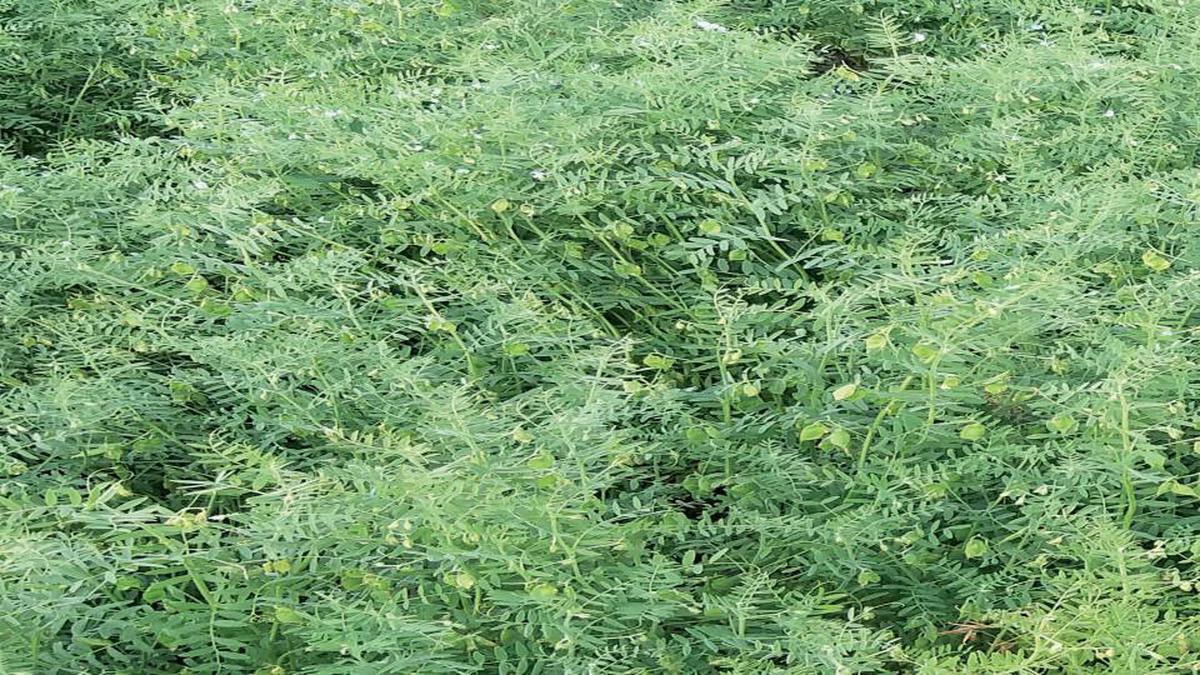
Rabi crop cultivation makes brisk progress
The Hindu
Despite lack of water in reservoirs, cultivation of Rabi crops in Telangana gains momentum with groundwater usage.
After the initial sluggishness, the cultivation of Yasagni (Rabi) crops in Telangana has gained momentum during the last fortnight despite the lack of water in most of the reservoirs in the Krishna Basin. Farmers went ahead with raising crops with the help of groundwater.
Driven by the transplantation of paddy in about 16.43 lakh acres as on January 10, the extent of Rabi crops’ cultivation has reached about 48% of the season’s normal (54.93 lakh acres) – 26.18 lakh acres. Last year, the extent covered on the same date was 25.94 lakh acres, including paddy in 15.68 lakh acres.
According to Agriculture department officials, Rabi crops were raised in a record 72.63 lakh acres last year, including paddy in 56.45 lakh acres. Reaching a similar extent this crop season was not possible given the fact that water for irrigation for the second crop was ruled out already under Nagarjunasagar, Jurala and several other irrigation systems in the Krishna Basin.
The Irrigation department authorities have already ruled out the possibility of giving water to the second crop in the command areas of Jurala, Nagarjunasagar canal systems and other irrigation systems drawing water from the two projects. While the Bhima, Nettempadu and Koilsagar lift irrigation schemes draw water from Jurala, Kalwakurthy LIS draws water from Srisailam. Similarly, A. Madhava Reddy Project lifts water from Nagarjunasagar.
Due to lack of water in Jurala, Srisailam and Nagarjunasagar, dependence on groundwater drawal is higher this season. The average groundwater table has fallen by about 1.5 metres (1.47 metres to be precise) in December 23 (6.8 metres below ground level) compared to December 2022 (5.32 metres). In just a month’s time, between November and December last year, the groundwater table has depleted by 0.56 metres.
“Drawal of groundwater would be more intense over the next couple of months as Rabi crops such as paddy, maize, groundwater and sunflower would be raised under borewells to a large extent, although crops such as Bengal gram and jowar would be raised without any irrigation in parts of combined Medak, Rangareddy and Mahabubnagar districts,” a deputy director said.
During the first 10 days of January, the day-wise consumption of energy in the State was 245.65 million units (highest) as against 234.47 million units last year.

Hyderabad Weather July 26 | City wakes to morning rain, waterlogging slows traffic in multiple areas
Hyderabad experiences morning rain, waterlogging, and traffic congestion, with IMD forecasting heavy rainfall in surrounding districts.





















 Run 3 Space | Play Space Running Game
Run 3 Space | Play Space Running Game Traffic Jam 3D | Online Racing Game
Traffic Jam 3D | Online Racing Game Duck Hunt | Play Old Classic Game
Duck Hunt | Play Old Classic Game










